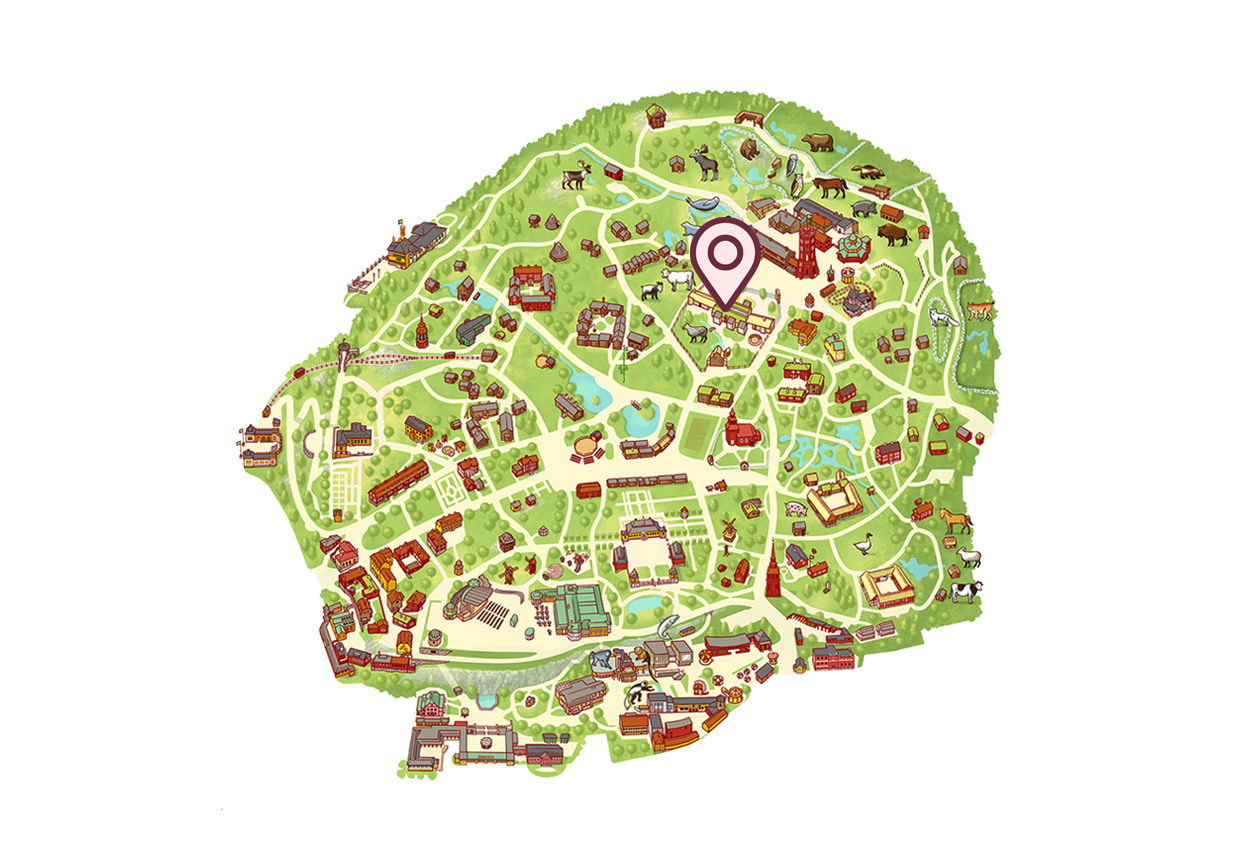- Grass snake
Grass snake
The grass snake is an excellent swimmer, and is able to move quickly and easily both on the ground and in the water. If it is frightened, it can lie on its back and play dead with its tongue hanging out of its mouth.
-
There are three wild snake species in Sweden, including the grass snake which can be found as far north as southern Norrland. Gotland and Lilla Karlsö are home to the Gotland grass snake, a subspecies of the grass snake. The Gotland grass snake is smaller. It often has orange or red neck patches, or no neck patches at all.
The grass snake grows longer than the adder. A really large grass snake can be 120 centimetres long and weigh 400–500 grams. It is a good swimmer and thrives near water.
Swims well
The grass snake usually lives close to rivers and lakes. It can move quickly and easily both on the ground and in the water. It prefers low-lying and marshy areas. Its diet consists of fish, voles, mice, frogs and toads, which it swallows whole. Other snakes cannot tolerate the poison in toads’ skins, but the grass snake is happy to eat them.
-
About the grass snake
Scientific name:Natrix natrix
Order:Scaly reptiles (Squamata)
Family:Colubrids (Colubridae)
Length:Approx. 60–120 cm
Weight:400–500 grams
Reproduction:Eggs are laid annually, usually in late June or in July, and the young hatch in August or September. Between 11 and 25 eggs are usually laid per clutch, but large females can produce considerably more.
Approx. 25 years:Approx. 25 years
Eats:Fish, voles, mice, frogs and toads
Distribution in Sweden:Götaland, much of Svealand and the southern Norrland coast
-
Grass snakes do not have venom fangs like adders, but can stun their prey with their poisonous saliva. This poisonous saliva cannot penetrate our skin, so there is no need to be afraid of grass snakes.
Plays dead
If the grass snake is frightened, it can lie on its back and play dead with its tongue hanging out of its mouth. It can also spray foul-smelling goo from its anal opening to scare off an enemy. If you get it on your clothes, it is hard to get rid of the smell.
Small head with pale neck patches
Grass snakes are often black like adders, but grass snakes have a small head, not a large, triangular one like the adder. Grass snakes also often have yellowish-white neck patches, while adders do not. The grass snake’s head has large scales, and the body tapers evenly towards the tip of the tail. The pupils are large and round, and the top of the head is covered with large plates. Both these characteristics distinguish the grass snake from the adder.
Hibernates down in the ground
Grass snakes hibernate deep underground. They retreat under the ground frost in vole holes or mounds of stones. Grass snakes are poikilothermic (commonly referred to as ‘cold-blooded’), which means that their body temperature follows the temperature of the air and the ground. In May, they emerge from hibernation and can temporarily gather in sunny spots.
Attracts males with scent
Female grass snakes attract males by emitting aromatic substances. Several males will compete to mate with her. In late summer, the female lays 11 to 25 eggs in a dunghill or some other warm place. The eggs look like bird eggs, but are soft. Once the eggs have hatched, the young are left to fend for themselves. The female lays eggs every year.
Sheds its skin several times a year
Snakes shed their skin in order to grow, and grass snakes do this several times a year. This also allows them to get rid of parasites on their bodies.
Has often lived near humans
Grass snakes have often near humans. They like to lay their eggs in dunghills on farms. Like all snakes, grass snakes are protected, but many grass snakes are still killed because people who are afraid of snakes kill them. However, it can be useful to learn to tell the difference between grass snakes and adders, as they can be very similar.
Threats
The grass snake is exposed to various types of threats. Draining wetlands, resulting in reduced availability of food, has wiped out the species locally. The number of suitable egg-laying sites has fallen significantly as the number of open dung pits and compost heaps has decreased. Acidification can affect amphibians and fish locally, resulting in less access to food for the grass snake. Major road construction between summer feeding grounds and winter hibernation sites can wipe out entire populations.
Conservation work
Work is currently underway to help the grass snake by creating or protecting good hibernation sites. Tunnels beneath roads allow grass snakes and other reptiles and amphibians to cross without being run over. When grass snakes thrive, it shows that the environment is healthy and rich.
The grass snake is classified as ‘Least Concern’ on the Swedish Species Information Centre’s red list.
You can find the grass snake here
